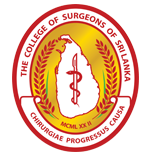GUIDELINES FOR THE ENDOSCOPY CENTRES FOR THE PROTECTION OF PATIENTS / STAFF FROM POTENTIAL RISK OF COVID 19 INFECTION
Author – Prof Mohan de Silva
Endoscopy centres face significant risk for diffusion of respiratory diseases that can be spread via an airborne route during aspiration of oral and fecal material via endoscopes. Virus transmission can occur during the incubation period in asymptomatic patients undergoing upper and lower GI endoscopic procedures
Following measures must be implemented and maintained to protect both patients and personnel to avoid unrecognized endoscopy-related diffusion and spread of the virus
- Only the patient and if needed, one accompanied person is allowed to enter the Endoscopy Centre
- Check the temperature of the patient (Definition of fever >37.5C)
Then
- Stratify the risk of COVID – 19 using the following questions
- In the last 14 days have you had fever (>37.5°C), cough, sore throat, or respiratory problems?
- Have you had family or close contact with a suspicious or confirmed case of COVID-19?
- Did you come from abroad with in last 14 days?
If the answer to one or more of these questions is positive, it is strongly advised to defer the procedure unless the procedure is performed to save life or for an immediately life-threatening condition
- All patients entering the endoscopy unit must wear a surgical mask
- Mask has to be removed just before commencing the procedure if the procedure involves Upper GI tract
- Mask has to be replaced again once the patient has recovered from sedation sufficiently to maintain oxygen saturation above 90% on room air
- All staff must wear face masks, gloves and head cover during work in the unit
- All staff directly handling the endoscopes must wear disposable protective gowns in addition to surgical mask, gloves and head cover
- Staff should wear 2 pairs of gloves, one inner pair of gloves covering the skin up to the wrist and one outer pair of gloves, the real “working gloves”
- All patient interactions by staff before the procedure (consent signature, patient instructions for the procedure), during (assisting) and after (vital signs recording) must be done with a reasonable distance from every patient
- It is mandatory for all staff to wash hands with soap and water or alcohol-based hand scrub before and after each procedure
- At the end of the examination, the removal of the personal protective equipment is a crucial part of the procedure
- Gloves are removed first because they are now considered heavily contaminated and a new pair of disposable glows is worn immediately
- Next is the head cover followed by the gown
- Last to be removed is the latest pair of gloves
- After gloves removal, hand hygiene should be repeated with soap and water or alcohol solution
- Disinfection of endoscopes and accessories should be done with a uniform, standardized reprocessing procedure
Decontamination policy for endoscopy room at the end of the daily procedures
Cleaning process should include cleaning of all surfaces using 1:100 dilution of household bleach and water as SARS coronavirus is known to be stable in feces and urine for at least 1 to 2 days; thus, surfaces might be a possible source of contamination




